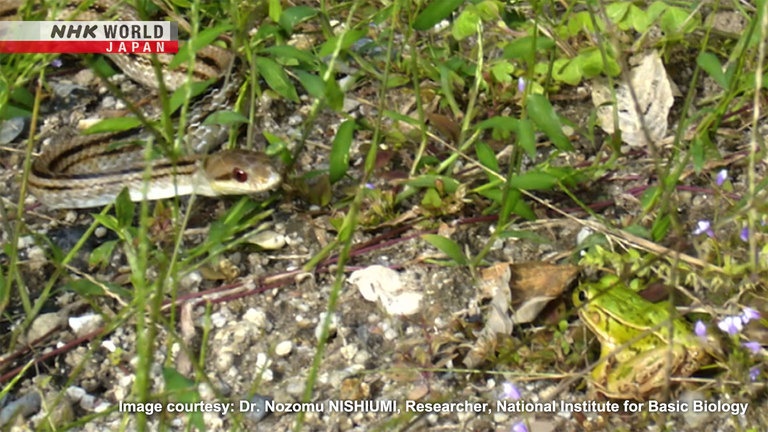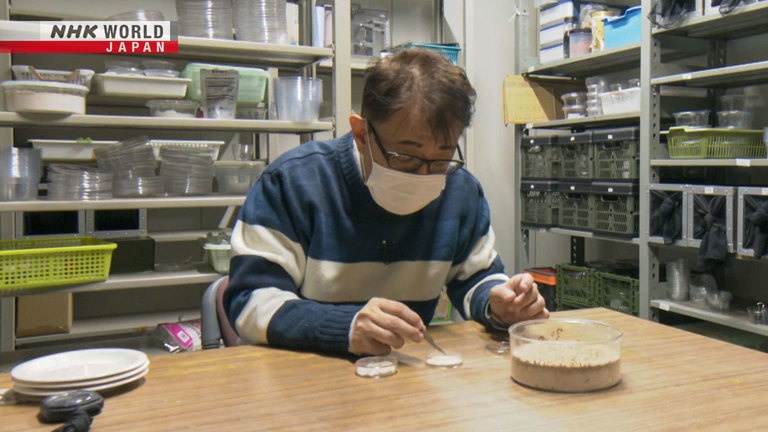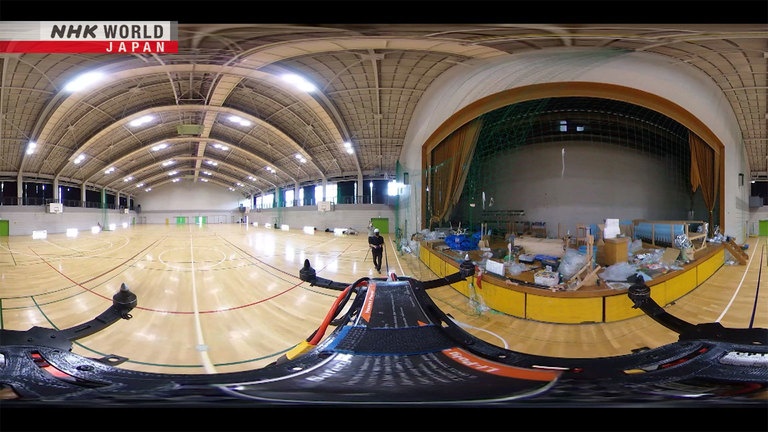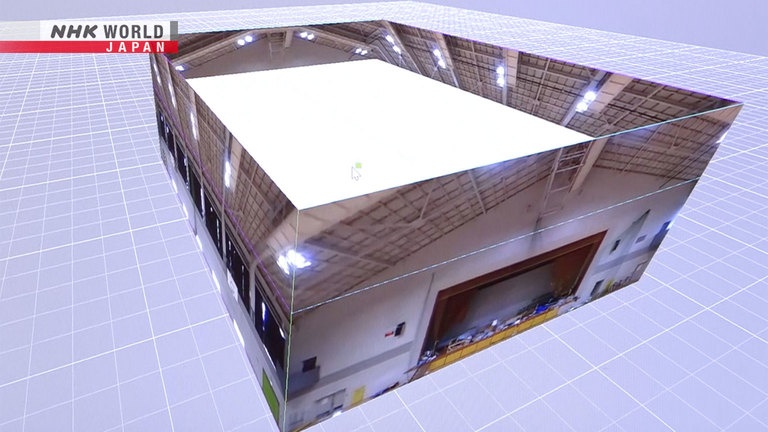Great Escape: How Prey Avoid Predators
All over the planet, creatures display incredible ways to escape predators. Shocking escape techniques beyond imagination are still being discovered one after another. A juvenile eel escapes from the gills of a predator fish even after being eaten. A bombardier beetle ejects gas that can reach temperatures of up to 100℃ to fend off an attack by a praying mantis. The common Japanese idiom "a frog stared at by a snake," implying a frog so overcome with fear that it can't move, actually belies a profound survival strategy. Even playing dead has been shown to be advantageous in avoiding predators. In this episode, we'll look at how "predation avoidance behavior" is tied to creatures' fundamental desire to survive.




Transcript
All over the planet, creatures display incredible ways to avoid predators.
Evading them...
Or scaring them off.
All behavior acquired from the need for survival.
We're still discovering surprising escape techniques never before imagined.
Take this bombardier beetle.
When a praying mantis attacks...
Incredibly, it is repelled by gas that can reach 100 degrees Celsius!
Here's another!
Just after being eaten by a predator, the creature was seen escaping in a very unusual way!
I was really surprised
by this incredible move.
Scientists are learning more about the evolution and nature of different creatures
by examining their means of escaping predators.
There are different ways of escaping
from various types of predators,
and different ways of escaping evolve.
That kind of diversity is alive today.
Today, we'll look at how spectacular escape techniques underscore the incredible diversity among living creatures.
Welcome to Science View. I'm your host, Tomoko Tina Kimura.
Today's program is about some incredible escape techniques of living creatures that were recently discovered.
With us today is Mr. Hajime Kornhauser, Director of Kyoto University's Office of Global Communications.
Mr. Kornhauser, it's nice to see you again.
It's great to be back!
Now whether on land, in the air, or in the sea, creatures have so many different ways of escaping predators.
They really do!
Quick-footed antelope running from lions or octopi that expel blinding ink are just a few examples.
The various escape tactics found in the natural world
really show how strong the fundamental desire to survive is among living creatures.
Creatures that were able to escape successfully were the ones that produced offspring and evolved.
That's a good point.
The ability to escape predators is connected to the evolution of living creatures.
We'll start off with some of the latest research revealing one unusual way a creature escapes its predator!
2021 saw the world's first report of one creature's amazing escape technique.
A laboratory at Nagasaki University shed light on this unusual behavior.
The shocking technique was observed in juvenile Japanese eels.
Research was being conducted to learn more about how Japanese eels escape from a predator, the dark sleeper.
Graduate student Yuha Hasegawa observed something strange during an experiment.
First, the eel was eaten by the dark sleeper.
Then while preparing for the next experiment,
I saw the eel swimming around again.
I was so surprised - I had no idea
what was going on.
I reported it to the professor.
An eel that should have been eaten
was swimming around in the tank!
They immediately set up a camera.
On the right is the dark sleeper.
Just to its left is a juvenile Japanese eel.
It is quickly eaten.
After a while, however...
The dark sleeper has begun to struggle.
Note the gills on its left.
Something has emerged.
An incredible escape from the gills!
I was quite surprised and
decided to see if it was true.
I didn't know that such behavior existed.
After more experiments were conducted, 28 of 54 eels, more than half, succeeded in escaping!
Kawabata thought that eels' elongated shape may have been a survival advantage in their evolution.
In the future, he hopes to examine the possibility that this behavior led to evolution of the eel's elongated form.
Being eaten by a predator
is very strong selection pressure.
Creatures who escape it
can survive and leave offspring,
so they probably evolved because
it was easier for them to survive.
That is a possibility.
That was quite surprising to see it escape from the gills after being eaten!
It really was, wasn't it?
This kind of behavior of fleeing from a predator is called "predation avoidance behavior."
Essentially that means fleeing to avoid being eaten.
Perhaps that really is how eels came to be so long and slender, to better escape predators.
There certainly is evidence for that.
Consider creatures that use "mimicry" to escape predation, like a stick bug resembling a small branch.
It sure does look like a twig!
So physical shape and appearance can play key roles in the fight for survival.
Next, we'll see how research has revealed that behind some escape techniques, a sophisticated game is being played.
"A frog stared at by a snake" is a Japanese idiom meaning paralyzed by fear.
But is the frog really so overcome with fear that it can't move?
Dr. Nozomi Nishiumi, who studies the "eat or be eaten" relationship among living creatures,
thought there might be another reason.
The danger level increases
as a predator gets closer.
I wondered if there's some new tactical potential
in continuing to let that happen.
Examining how snakes attack, he found that the frogs which do not move have a surprising strategy.
To the right is a black-spotted pond frog.
To the left is a four-lined ratsnake.
The frog is aware of the snake's presence but hardly moves.
It certainly seems paralyzed by fear.
The snake approaches slowly.
Now, the snake is just 20 centimeters from the frog.
The frog is in a desperate situation!
But suddenly...
It dodged the snake!
Let's replay that in slow motion...
notice that "right after" the snake starts to move, the frog jumps.
By moving "after" the snake strikes,
the frog increases its chances
of successfully getting away.
Fleeing after the snake begins to move increase the frog's chance of survival.
Once the frog jumps, it can't change course in mid-flight.
Therefore, if it moves first, it can be instantly tracked by the snake.
That means the snake could anticipate the frog's movement, and catch it in mid-air.
Yet, if the frog moves after the snake...
It's also difficult for the snake to change course in the middle of the attack.
Once the frog dodges the snake's attack, the snake must prepare its extended body for the next attack.
The time from when the frog begins to flee to when the snake repositions itself
and begins to attack again is approximately 0.4 seconds.
The frog can utilize these 0.4 seconds by moving "after" watching the snake's movement.
And even in the open, this 0.4-second grace period increases the frog's chance of survival,
since it can escape to a safe place, such as a nearby body of water, with a single leap.
However, if the two are too close together, the frog cannot react in time to the snake's attack.
The frog can leave the ground 0.11 seconds after the snake moves.
Calculations show that the frog can dodge the first strike
up to the approximately 6.4 centimeters that the snake covers in 0.11 seconds.
And indeed, when the frog is approached at close to this distance,
it begins to move and flee before the snake moves.
In other words, the frog's strategy is to wait until the last possible moment for the snake to attack,
while assessing the distance at which it can dodge the attack.
The frog isn't struck by fright
- waiting is an effective defensive move.
The tactics of the losing side require creativity.
Actions that at first glance seem inappropriate
actually have a variety of strategic aspects.
This illustrates the depths
of survival strategies.
I never knew that this kind of offensive and defensive battle had been going on between the snake and frog.
Yes. Now although this frog wasn't actually paralyzed with fear,
it's interesting that the Japanese idiom is very similar to the English expression "like a deer in the headlights."
Both idioms are inspired by animal behavior.
Very true! So as we saw with the frog and the snake,
the pressure on the creature being eaten is presumably greater than that on the eater.
Because, if the creature is eaten, that's where its life ends.
Yes, and consequently, its evolution would stop.
That has to be a significant driving force behind acquiring incredible escape abilities.
And incidentally, this research first took place at Kyoto University.
I remember writing a press release about this topic and it was amazing for me to learn
how the frog is able to estimate the speed and direction of the snake's lunge.
It's almost as if the frog has an innate understanding of physics!
Perhaps frogs are more intelligent than we give them credit for.
Coming up next, researchers look deeper into the ecology of creatures that play dead.
Feigning death is when a creature stops moving and pretends to be dead.
Was this behavior acquired during evolution because it helps survival?
Dr. Takahisa Miyatake of Okayama University is trying to answer this question.
These are red flour beetles.
They feign death.
Red flour beetles are pests that feed on grain and other crops.
This insect was known to vary from individual to individual in the frequency and duration of playing dead.
So Miyatake's team selected a group that played dead for a long time
and a group that played dead for a short time, and propagated both.
This gave rise to a long strain that played dead for a long time
and a short strain that played dead for a short time.
After the 10th generation,
the short strain became the insects
that don't feign death at all and keep moving,
no matter how much we breed them.
And this is the long strain,
the one that feigns death
for a longer period of time.
Using these two strains, he tested whether feigning death is advantageous for predator avoidance.
The two strains were confronted by a predator, a jumping spider.
When a jumping spider jumps on a long strain beetle...
It plays dead.
But the jumping spider stares at it without eating it.
Jumping spiders are less likely to recognize non-moving objects as food.
Then along came a short strain beetle.
It keeps moving even in front of the spider's eyes.
The spider passed up the long strain beetle and attacked the short strain beetle.
That beetle was eaten.
19 similar experiments were performed, all of which showed that the long strains,
which feigned death the longest, survived.
This was the world's first statistical proof
that playing dead is advantageous in avoiding predators like jumping spiders.
Yet this begs a new question...
If it's so advantageous, all red flour beetles should be able to play dead, but some hardly play dead at all.
Perhaps there are disadvantages to individuals who play dead.
To solve this mystery, Miyatake's team carefully examined the differences between short and long strains.
The path when walking on a sphere was recorded and the walking style was examined.
Long strains were less active than the short strains, with differences in movement and frequency of turning.
Long strains were also found to have fewer opportunities to reproduce with the opposite sex than the more active short strains.
Moreover, long strains were found to be vulnerable to physiological stresses such as heat and cold,
giving them an advantage in predator avoidance, but a disadvantage in other areas such as reproduction.
It turns out that they have evolved by making trade-offs
- sacrificing something in exchange for giving priority to something else.
Not everything is OK for living creatures.
They have to make choices to survive.
So even within the same species, there are some that play dead and some that don't!
Well, after all, organisms are limited in the resources they can have.
One can't have everything!
Creatures that have achieved a good balance, including in how to escape, are the ones that will survive.
Speaking of survival, it seems to me that the escape techniques of creatures are far more complex than we imagined.
I wonder what else future research will reveal about how creatures evade their predators.
Yes, it seems that we have only started scratching the surface on this topic.
We often pay more attention to predators and how they capture their prey,
so it is really enlightening to learn about completely new survival strategies.
Now, let's change topics to the use of drones for infrastructure maintenance and disaster prevention!
We visited a company that is enabling groundbreaking maintenance through cutting-edge technology.
Japan is now facing a major challenge.
The roads, bridges, and tunnels that were built during the period of rapid economic growth in the 1960s are aging and deteriorating.
However, it is time-consuming and costly for people to perform checks underneath bridges and inside tunnels.
That's why some are trying to tackle this difficult problem with cutting-edge technology.
Here is that technology in action.
We're trying to make
a 3D model of a gymnasium
by flying a drone inside
with a camera mounted on it.
This is not footage shot by the drone.
It's a 3D model of the gymnasium faithfully reproduced on a computer.
The viewpoint can be freely changed, and any areas of interest can be enlarged.
So just how was that created?
First, they fly a drone equipped with a 360-degree camera inside the gymnasium.
The video is then imported into a computer.
When all the surfaces are aligned...
a 3D model is created in a matter of seconds!
With this technology, cracks and corrosion caused by aging can be reproduced with accurate dimensions.
It's easy to find parts that need to be replaced, even in high places that are difficult for people to approach.
Moreover, the scaffolding required for maintenance can be calculated,
and even the construction cost can be determined.
The project is led by Hirabayashi Takashi, a researcher who seeks to make advanced technology useful to society.
The most important thing when
carrying out repair or maintenance
is to properly understand
the current situation.
There are places that are dirty,
dangerous, expensive, and narrow,
and thus difficult for humans to enter.
Such places can be reached by drone.
However, there was a significant challenge in developing this technology.
For example, in capturing this surface,
distortion of the camera lens
makes it difficult to match.
Images captured by a 360-degree camera are highly distorted because a large area is captured in the angle of view.
So Hirabayashi and his colleagues developed software to correct the distortion.
It utilizes these white grid lines.
Look closely and you can see that
the white grid is correct here,
but deviates over here.
This causes the surface
to be cut off when imported.
The blue and green pointers are aligned so that
they fit together as much as possible.
It finds straight lines in the image and aligns them with the reference grid lines.
Then, by adjusting the alignment, image distortion is corrected.
This allowed Hirabayashi to perfect the technique of creating accurate 3D models.
Now he is taking on further challenges.
He's working on drones that fly autonomously.
Although drones are being utilized in a wider range of applications,
they can be difficult to use underground, where GPS and radio signals may not reach.
To solve this problem, Hirabayashi and his team developed a small device containing a gyro sensor and an acceleration sensor.
The drone will be able to accurately determine its own position from the data obtained.
This makes it possible to fly autonomously even in environments where GPS is out of reach.
In May 2023, a demonstration test was conducted in a subway yard where GPS cannot reach.
The drone flies autonomously, keeping track of its own position.
It landed right next to its planned spot.
Then a 3D model was successfully created from the video captured.
Once this technology is perfected, it is expected to be useful after earthquakes and other disasters.
In a major disaster, GPS cannot be used.
I expect the use of the system
will expand to disaster management,
such as flying around autonomously
without relying on GPS or a pilot
to help locate missing people.
From infrastructure development to disaster prevention.
In Japan, drones are expected to help in a variety of situations.